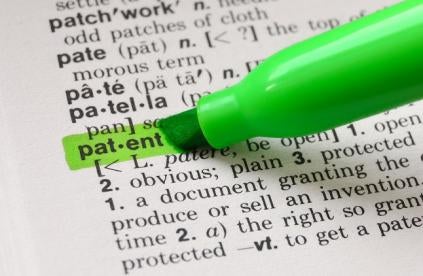U.S. Patent and Trademark Office guidelines do not currently allow patentees to directly claim software inventions, thereby encouraging use of other claim types such as method claims. As a result, the patent office has issued many patents with method claims directed to software inventions. But patentees who rely on method claims to protect their software inventions — and indeed all patentees with method claims — face a significant obstacle that has been imposed by the Federal Circuit.
Specifically, the Federal Circuit has held for purposes of infringement that method inventions are not considered made or sold even if they are necessarily used by or embodied in products that are made or sold. This has the effective result of helping infringers to exploit patented method inventions by selling products that make use of the invention — even in ordinary and expected usage of the product — while evading legitimate attempts by the patentee to remedy the infringement. Below, we suggest that the Federal Circuit’s position is incorrect and unnecessarily hampers protection and enforcement of method inventions, disproportionately affecting software. The Federal Circuit should change course and clarify that methods can be sold just like any other invention in certain circumstances.
Federal Circuit's Position
The Federal Circuit inexplicably determined that a company cannot sell a method even if it sells a product that necessarily performs the method in ordinary use. The Federal Circuit has held, in cases including Joy Technologies and Ricoh, that methods are not made or sold for purposes of infringement when embodied in products, but instead can only be performed.[1] This is true even if a company makes and sells a product that necessarily performs the patented method in ordinary and expected use by the customer.
This proposition seems surprising on its face given (1) the statutory language of 35 U.S.C. §271(a) which states that the making or selling of “any patented invention” infringes and (2) the fact that a method is unquestionably one type of “patented invention.” This position also appears to be solely a creation of the Federal Circuit which stands in tension with the U.S. Supreme Court’s Quanta ruling as discussed below.
Nevertheless, under the current Federal Circuit law, an accused infringer can argue that the making and selling of its product does not directly infringe a patented method even if its product performs that very method in ordinary use by the customer. This creates significant burdens for patentees that unnecessarily weaken patent rights with respect to method claims.
Problems Created by Federal Circuit's Position
Inventors of a patented method face unfair burdens under current Federal Circuit law when seeking to remedy another company's exploitation of the method.
Given the current Federal Circuit law, a method claim inventor confronting an infringer is left with two insufficient choices, both of which fail to adequately protect the patentee’s method invention. First, the patentee may seek to sue the customer who buys the product in question because the customer causes the method to be performed through use of the product. But the law should not incentivize lawsuits against end user customers when it is the manufacturer’s product itself that necessarily causes the method to be performed when used in an ordinary manner. Indeed, certain proponents of patent reform have recently argued that there are too many patent lawsuits against end user customers, as opposed to lawsuits against the seller of the product in question. Shouldn’t a patentee instead have a direct infringement claim against the company that is most directly exploiting — and profiting from — the patentee’s invention?
Second, the patentee generally has only an indirect infringement claim against the product seller on the basis that the seller induces the end user customer to infringe.[2] But indirect infringement suits are more difficult to prove because the law imposes for inducement a heightened knowledge requirement regarding the existence of the patent and the acts constituting infringement.[3]
There is accordingly an almost de facto requirement of knowledge before a software maker can be found to infringe, given that (as previously noted) the patent office does not allow direct claiming of software and instead emphasizes claims, such as method claims, that indirectly cover software inventions. But no other area of technology shares this heightened burden of proving knowledge for infringement — why should software stand alone? In sum, patentees today should be able to better protect their software inventions, and especially method claims, against a product maker who sells a product that necessarily practices or embodies the patented method in the ordinary and expected use of the product.
Why Federal Circuit Should Modify Its Position
The Federal Circuit should alter its position and hold that the making or selling of a product that practices a method in ordinary and expected use infringes.
We submit that the problems noted above are caused by an incorrect position that has been taken by the Federal Circuit, and it should be changed. The Federal Circuit should instead hold that the making or selling of a product that practices a method in its ordinary and expected use does infringe the method under 35 U.S.C. §271(a). If necessary, the Federal Circuit should do so in an appropriate case decided en banc.
This change would comport with the language of the statute, the Supreme Court’s Quanta case, the Federal Circuit’s own case law in an analogous area, and common sense. This legal issue was recently raised to the Supreme Court in a 2013 petition for writ of certiorari in Mirror Worlds, but certiorari was denied such that the issue is unresolved.[4] The issue therefore continues to be a timely one.
First, such a change would comport with the language of §271(a) itself as well as the Supreme Court’s Quanta decision. Section 271(a) says that “whoever without authority makes, uses, offers to sell, or sells any patented invention” infringes.[5] There is no question that a method claim in an issued patent recites a “patented invention” — methods are expressly included in the definition of “inventions patentable” in 35 U.S.C. §101.[6] Given that, is there any reason that §271(a) would not be violated when the method is sold per the statute, such as when a method-embodying product is sold? One cannot answer the question by pretending that a method cannot be embodied in a product — we already have Supreme Court precedent on that question. In its 2008 decision in Quanta v. LG, the Supreme Court expressly and unambiguously held that a product can embody a method and that the sale of such a product exhausts patent rights.[7] Yet the Federal Circuit’s post-Quanta case law has failed to recognize that the sale of such an embodying product would also infringe, seemingly at odds with Quanta.
Second, the Federal Circuit’s 271(a) case law appears to conflict not only with the Supreme Court but also the Federal Circuit’s own case law regarding §102(b) prior art. With respect to §102(b), the Federal Circuit has concluded that methods can be sold, even as embodied in a computer program, such that a §102(b) bar is triggered. For example, in Poly-America the Federal Circuit reiterated “that a lease of a computer program, one that implemented a claimed method and was guaranteed to operate properly, constituted a commercial offer for sale of the method.”[8] It makes little sense for the Federal Circuit to hold that the sale of a computer program may constitute the sale of an embodied method for §102 of the Patent Act, but not §271.
Third, the proposed case law modification comports with common sense. It is nonsensical to suggest that a company is unable to profit directly from an innovative method by making and/or selling a product that practices the method in its ordinary use. For example, assume that a software maker, after investment of research and development resources, developed new software and patented a corresponding new method which significantly increased server efficiency. If a competing company later manufactured and sold software performing this same patented method, would anyone seriously question whether the competing software maker was profiting directly from inclusion of the patented method in its competing software? Similarly, the software makers surely would not tell their shareholders that they had somehow failed to commercialize on the efficiency method innovation on the fiction that the method was not actually “made” or “sold.”
The law should recognize the fact that the making or selling of a method-embodying product constitutes a making or sale of the method. This would simply reflect factual reality and would have added significance for software, given that software makers today cannot directly claim software under existing USPTO guidelines and instead must resort to claim types such as methods.
We submit that the Federal Circuit should modify its approach to hold that the making or selling of a product that practices a method in its ordinary and expected use infringes the method, thereby conforming its position with the language of §271(a), Supreme Court and Federal Circuit precedent, and common sense.
The opinions expressed are those of the author(s) and do not necessarily reflect the views of the firm or its clients. This article is for general information purposes and is not intended to be and should not be taken as legal advice.
[1] See, e.g., Joy Technologies, Inc. v. Flakt, Inc., 6 F.3d 770, 773 (Fed. Cir. 1993) (stating that “[t]he law is unequivocal that the sale of equipment to perform a process is not a sale of the process within the meaning of section 271(a)”); see also Ricoh Co., Ltd. v. Quanta Computer Inc., 550 F.3d 1325, 1334 (Fed. Cir. 2008) (holding that “a party that sells or offers to sell software containing instructions to perform a patented method does not infringe the patent under § 271(a).”).
[2] In certain cases, the seller may directly practice the patented method, such as by performing testing of its products. However, there does not appear to be a legitimate reason to restrict direct infringement to such internal testing when the seller also profits by selling a product that necessarily performs the method.
[3] See Commil USA, LLC v. Cisco Systems, Inc., 135 S. Ct. 1920, 1928 (2015) (discussing, in addition to knowledge of patent, requirement of knowledge that “the defendant knew the acts were infringing”). The Supreme Court has previously applied a willful blindness analysis to the knowledge requirement. See Global-Tech Appliances, Inc. v. SEB S.A., 131 S. Ct. 2060, 2070-71 (2011).
[4] Mirror Worlds v. Apple Inc., 2012 U.S. Briefs 1158 (U.S. Mar. 21, 2013).
[5] 35 U.S.C. § 271(a) (emphasis added).
[6] See U.S.C. §101 (referring to patentability of any useful “process, machine, manufacture, or composition of matter”) (emphasis added); 35 U.S.C. §100 (defining “process” as a “process, art or method”) (emphasis added).
[7] Quanta Computer, Inc. v. LG Electronics, Inc., 553 U.S. 617, 628 (2008).
[8] Poly-America, L.P. v. GSE Lining Tech., Inc., 383 F.3d 1303, 1308 (Fed. Cir. 2004) (characterizing holding in Minton v. NASD, 336 F.3d 1373, 1378 (Fed. Cir. 2003)) (emphasis added).





 i
i


